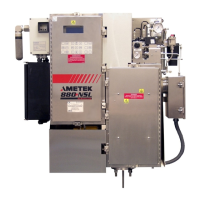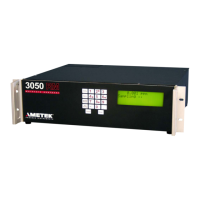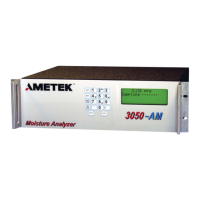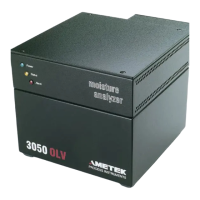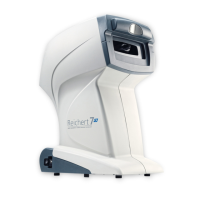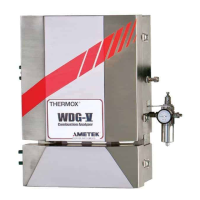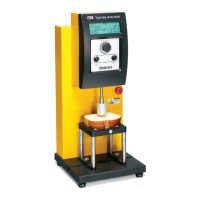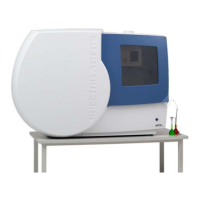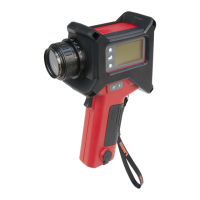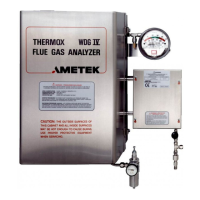E-6 | Model 888 ATEX IECEx Tail Gas Analyzer
Zero Error [4]
The analyzer periodically flushes the cell with air or nitrogen. During
this time, the analyzer will record the light intensities for each of the four
detectors. The light intensities are checked against a configurable mini-
mum and maximum value. If the value is outside of these limits, the zero
calibration fails and the analyzer continues to use the results from the last
successful zero cycle. A Level 2 alarm occurs to notify the user that a zero
cycle has failed. There are a number of possible causes for a failure. The
sample cell may not have been completely flushed out or there may be a
contamination problem with the optics.
The alarm condition is cleared upon the successful completion of a zero
cycle.
Calibration Error [5]
The analyzer periodically performs a calibration check. This check can be
done manually by insertion of a neutral density filter or done automati-
cally by the software. During an automatic calibration, the number of
flashes varies and the change in absorbance is compared to the theoretical
absorbance.
For both methods, the ratio between the expected and actual values must
fall between a programmable range (15% by default). If the ratio is outside
this range, a Level 2 alarm results. Failure could be the result of a number
of issues—a defective lamp or lamp power supply (100-2061) could cause
the intensity per lamp flash to vary.
The alarm condition is cleared upon the successful completion of a cali-
bration cycle.
Demister Temperature Alarm [6]
There is a temperature sensor mounted on the demister assembly in the
oven compartment. The temperature of that cell must be controlled to
within the configured deviation. Typically the target temperature is 129 ±
5 °C. If the temperature is outside the allowable range, a Level 1 alarm oc-
curs. The demister removes sulfur mist from the process gas and returns
it to the process pipe. The internal surfaces of the demister are controlled
to a temperature that allows sulfur mist to condense into liquid sulfur
thus removing it from the sample gas. Causes for this condition could be a
defective solid state relay or excessive cooling air flow.
The alarm will clear itself once the temperature is in range.
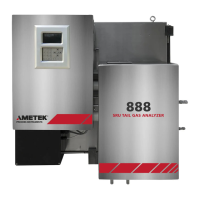
